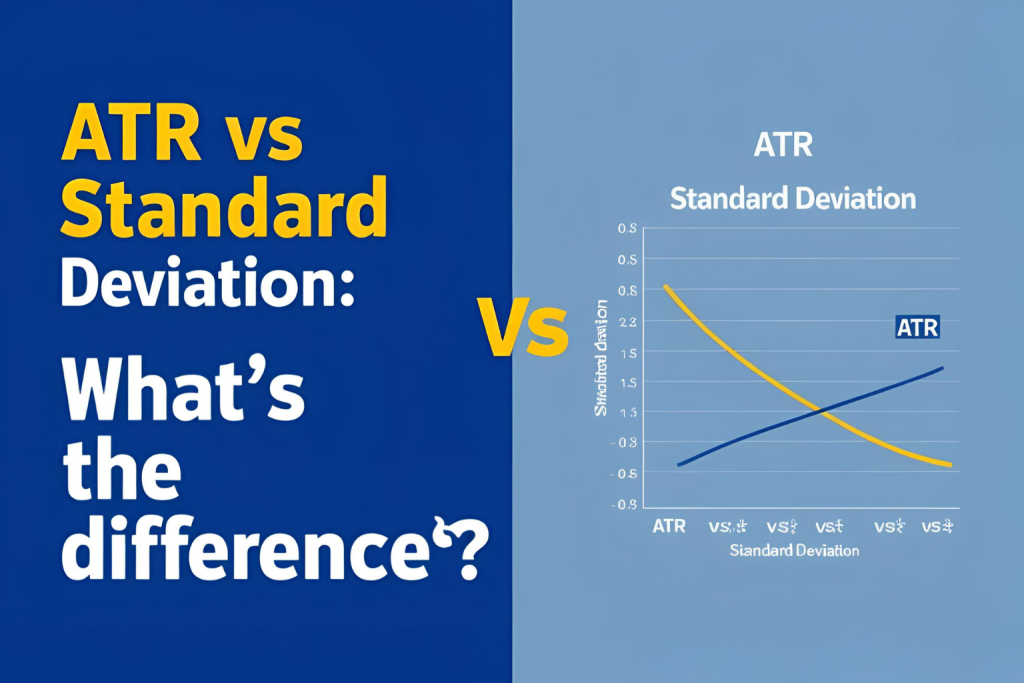When it comes to analyzing market volatility, two popular indicators often come up: Average True Range (ATR) and Bollinger Bands. While both help traders understand price movement, they do it in different ways and serve different purposes.
In this article, we compare ATR vs Bollinger Bands to help you decide which one fits your trading strategy better.
What Is ATR?
Average True Range (ATR) measures the average range between high and low prices over a given period, typically 14 periods. It gives a numerical value for volatility, helping traders manage risk and set appropriate stop-loss levels.
- Higher ATR = More volatility
- Lower ATR = Less volatility
- ATR is non-directional and doesn’t predict price direction
What Are Bollinger Bands?
Bollinger Bands, developed by John Bollinger, consist of:
- A middle moving average
- An upper band = MA + 2 standard deviations
- A lower band = MA – 2 standard deviations
The bands expand and contract based on price volatility, visually showing overbought/oversold conditions and potential reversals.
✅ Key Differences: ATR vs Bollinger Bands
| Feature | ATR | Bollinger Bands |
|---|---|---|
| Output Type | Numeric value (line) | Visual bands around price |
| Measures | Price range movement | Price deviation from moving average |
| Use Case | Stop-loss, volatility filter | Reversal or breakout signals |
| Directional? | No | Yes (visual positioning) |
| Visual Impact | Line indicator below price chart | Overlay on price chart |
When to Use ATR
- To determine stop-loss based on volatility
- To filter trades during low/high volatility periods
- To measure the strength of price moves (not direction)
When to Use Bollinger Bands
- To identify overbought and oversold conditions
- To anticipate reversals or breakouts
- To visually assess price relative to mean reversion zones
Which One Works Better?
It depends on your trading style:
| Trading Style | Better Fit |
|---|---|
| Risk Management & Stops | ATR |
| Reversal or Breakout Signals | Bollinger Bands |
| Quantitative Systems | ATR (easier to script) |
| Visual Pattern Trading | Bollinger Bands |
Some traders even use both together:
- Use ATR for stop-loss placement
- Use Bollinger Bands to time entries or exits
Final Thoughts
There’s no clear winner in the ATR vs Bollinger Bands debate. Both are excellent tools, but they serve different purposes. ATR is perfect for managing volatility and risk. Bollinger Bands shine when identifying price extremes or consolidations.
Choose the one that matches your trading goals—or better yet, combine them for deeper insight.
✅ FAQs
1. Can ATR and Bollinger Bands be used together?
Yes. Many traders use ATR for stop-loss and Bollinger Bands for entry/exit timing.
2. Are Bollinger Bands more suitable for beginners?
Yes, because they offer a visual representation of price volatility.
3. Does ATR work better in trending markets?
Yes, ATR helps adjust risk in both trending and volatile conditions.
4. Which is better for setting stop-loss: ATR or Bollinger Bands?
ATR is more precise for calculating stop-loss levels based on true price range.
5. Do Bollinger Bands provide entry signals?
Yes, when price touches or breaks the bands, it may signal reversal or continuation.


